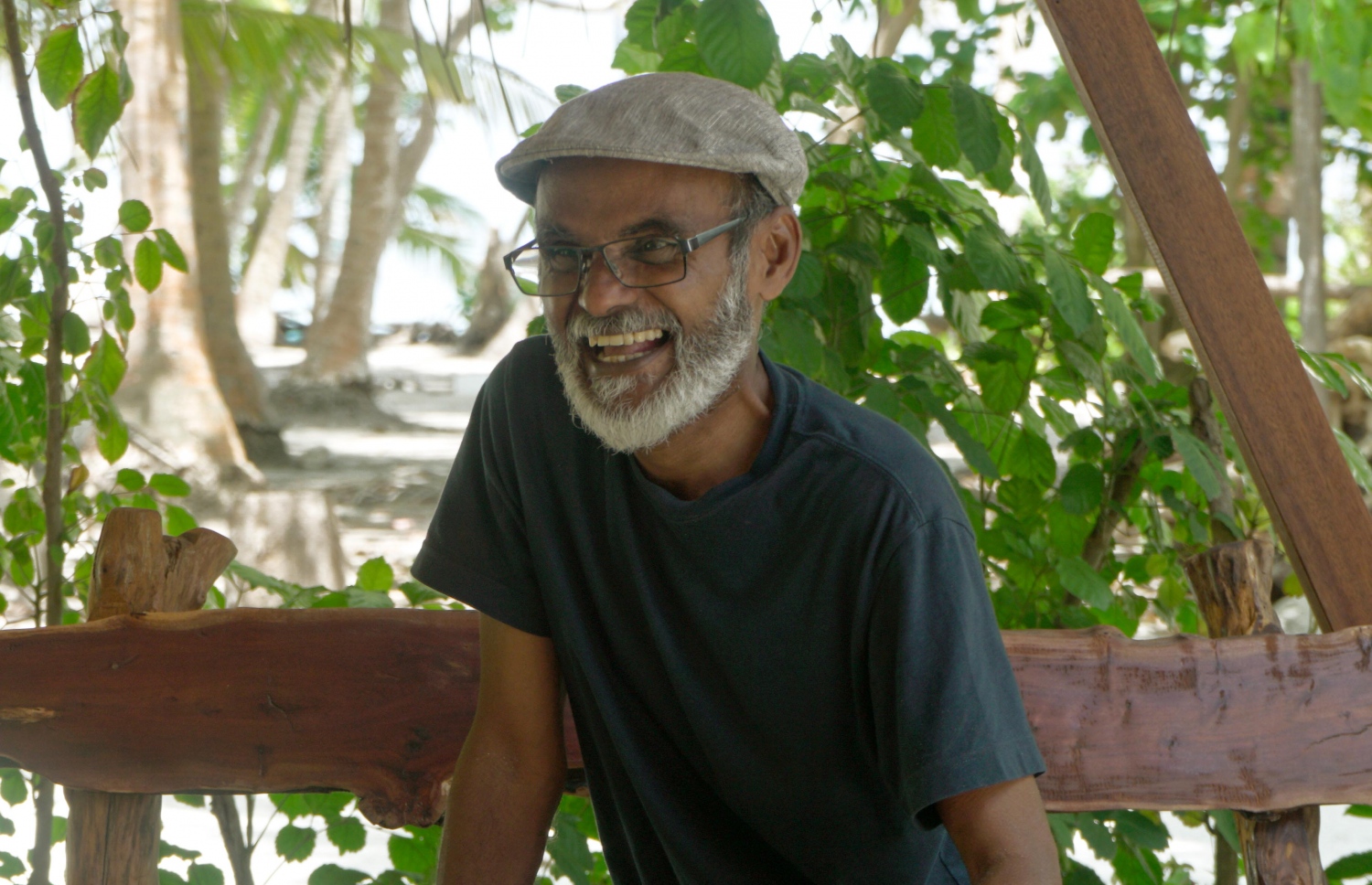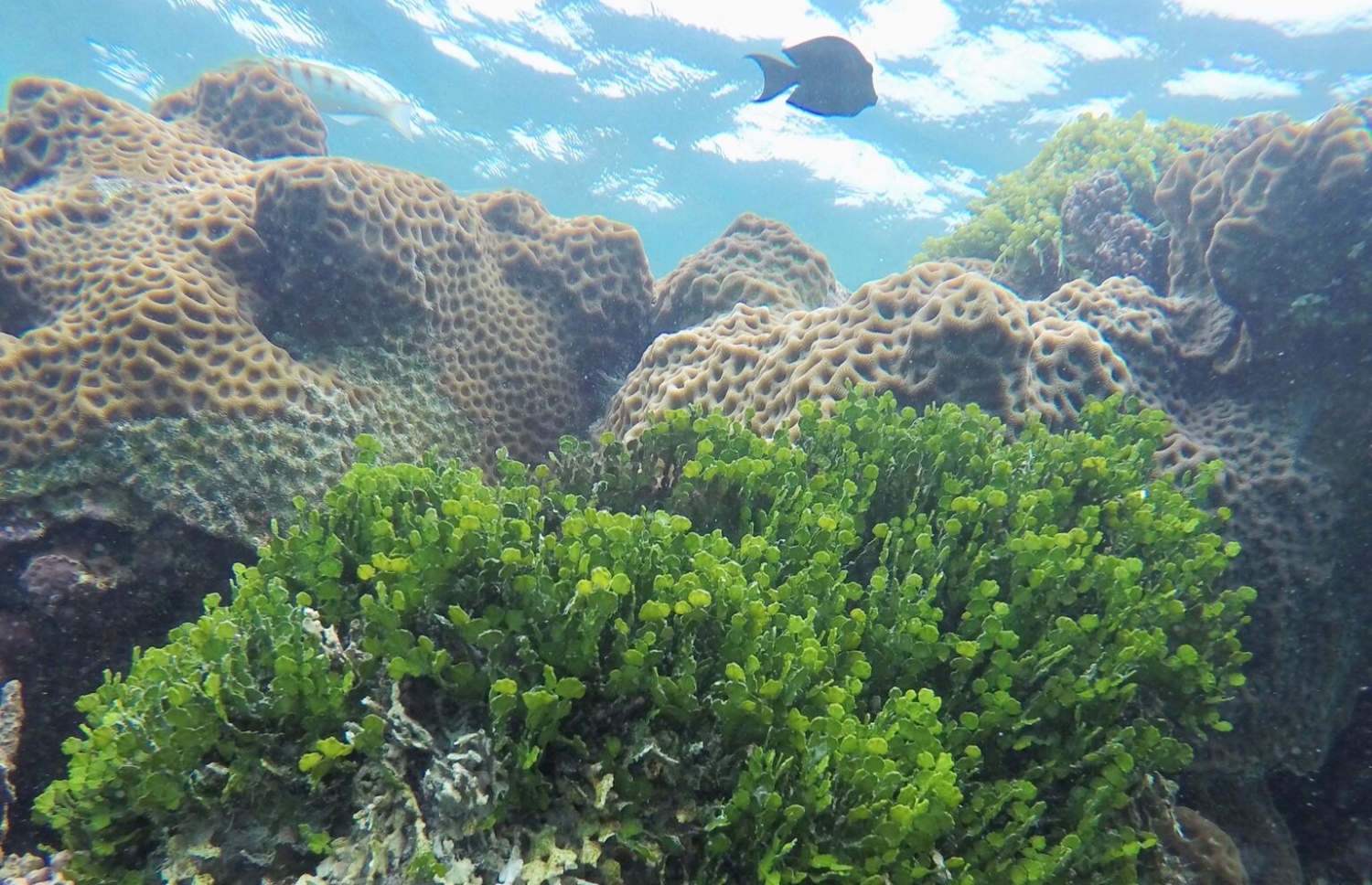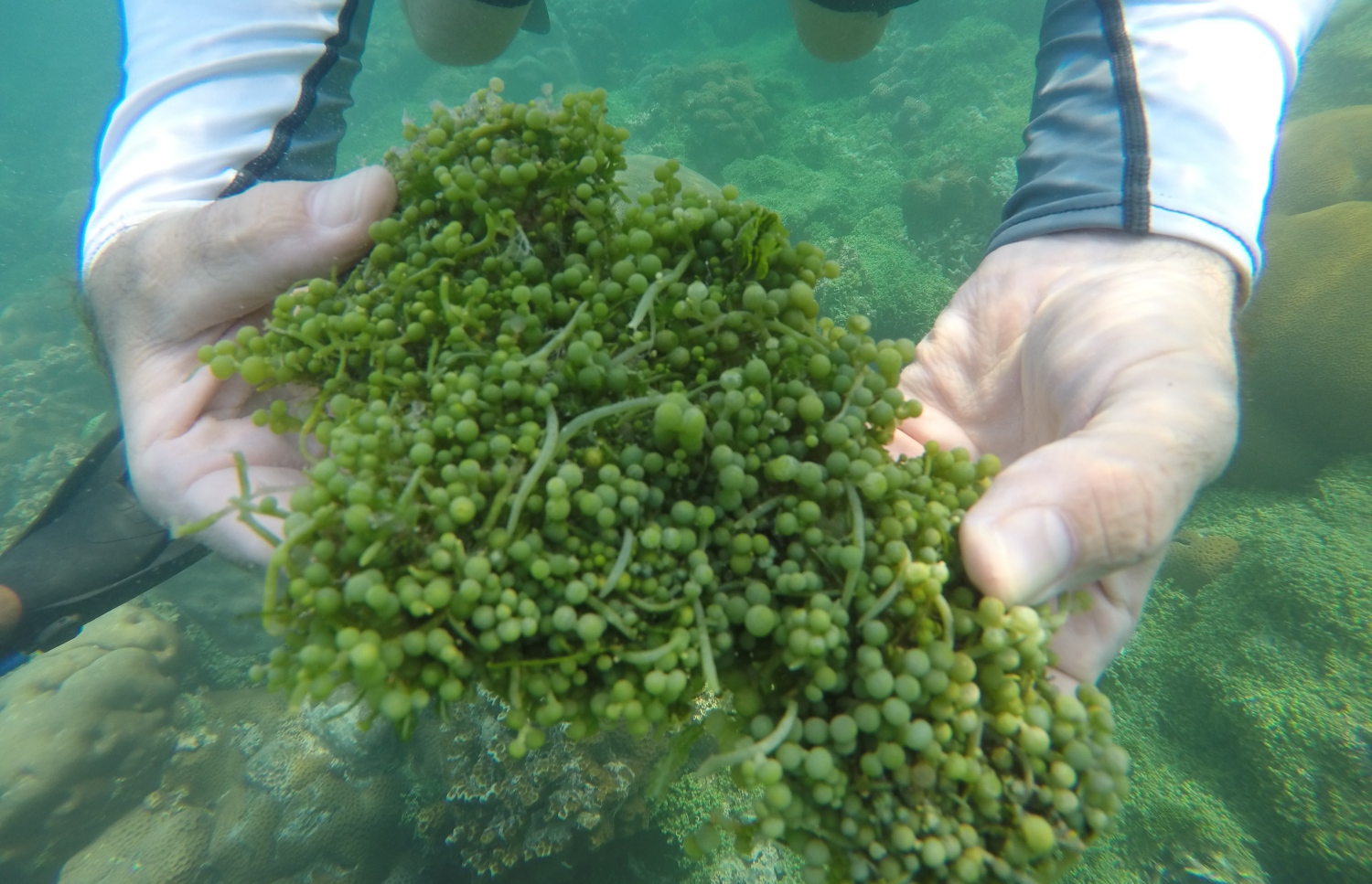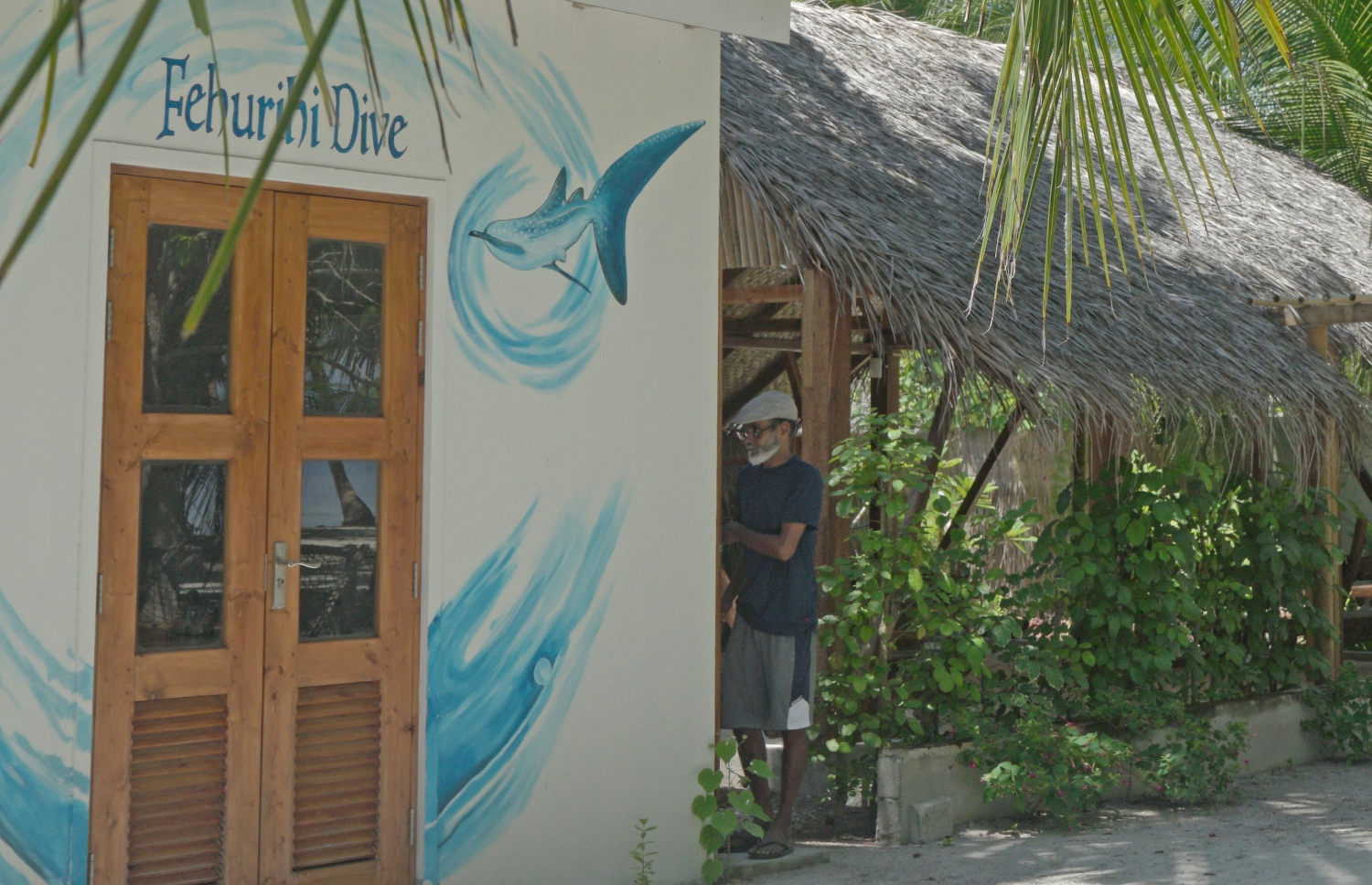“More marine scientists, thats what we need!” he grins, nearly jumping out of the beautifully carved wooden seat in his excitement - and his enthusiasm is infectious.
Hussein Rasheed, better known to colleagues, students and fans alike simply as Sendi, needs no introduction in the world of diving and such oceanic pursuits.
Mid-heated debate, over the state of naturalized education and marine interest in Maldives, the cameras start rolling and we divert focus into what Sendi is up to now, and how his path led him to the work he is doing today.

“I found out, being a dive instructor, that environmental aspect is very very important. The dive industry actually relies on the environment”, said Sendi.
However, running six dive centres is no small task, and left little room for activities beyond teaching and management. After three decades developing the industry, Sendi sought to spend more time in conservation and research.
Detailing the factors prompting his interest in seagrass and seaweed, he explained, “I met a professor in Lakshadeep six years ago, and he explained the importance of seaweed or seagrass to the ecosystem”.
The next phase ties into his position as founder of Villa College’s Faculty of Marine Studies, well known for its excellence in watersports and scuba diving training. With the development of the Marine Science and Research Department seemingly in stasis, Sendi's growing curiosity about seaweed and seagrass combined with international resources, cemented the decision for the faculty and himself, to plunge deep into the field of research.
While the gears were set in motion, however, there was one essential matter to uncover - it remained unclear whether Maldives could provide the necessary ingredients to further their work, especially considering the particular species of seaweed and seagrass the research community were interested in.

“Since I met this guy, six years ago, whenever I go to an island, I just walk on the beach. And now, I’ve found 40 different species of seaweed - it is amazing, the colours, the shapes.”
“It's like a garden in the ocean!”
The next phase, Sendi explains, comes following a meet with professors from the Department of Marine Biomedical Sciences in the College of Ocean Sciences at the Jeju National University, Republic of Korea.
The Korean scientists are reportedly exploring into possible consumer benefits that can be derived from seagrass, seaweed and sea grapes, with a special focus on adapting products for medical solutions as well as nutritional value.
Having studied effects in Sri Lanka for a number of years, the scientists approached Villa College to expand their base of research.
“I found it quite interesting actually”, said Sendi, divulging that it was a chance encounter during an official “dive centre scouting” trip that led him to stumble upon Goidhoo Atoll and the natural treasures that lay enclosed in its expansive lagoon and reef.
“Seagrass and seaweed are the rainforests of the ocean”, he declared, eyes lighting up once the interview delved further into the topic he is so clearly passionate about.
Scientists around the globe have attested to Sendi’s statements that seagrass plays a vital role in balancing the ecosystems of the world.
“As with plants and trees on the land, in the ocean oxygen is generated from seagrass - which also stores carbon-dioxide in the ground”.
“One square kilometre of seagrass actually sinks about 83 metric tons of carbon… about the same amount of carbon released by 100 -150 cars - just on that aspect, protecting the seagrass, I think it is crucial”.
He referred to Maldives’ obsession with removing “unsightly, ugly” seagrass, which sparked the formation of the #ProtectMaldivesSeagrass movement led by Six Senses Laamu’s team Maldives Underwater Initiative, earlier this year.

“For me”, he smiles, “it is beautiful”.
However, it is hardly a matter of aesthetics as the diver-extraordinaire begins to list the creatures that call it home, it becomes apparent that these sea beds are places of nurturing, nourishment and protection, by themselves.
“Various crustaceans, shrimps, fish - the most common ones like Filolhu, Ginimas - all begin their lifecycles there”.
But that is not all that the research has unsurfaced, in fact, that breeding information has been known for a long time.
During a presentation given at Villa College, the Korean professors revealed that their findings showed signs of containing anti-ageing properties from two different species of seaweed that grow widely in Fulhadhoo and across the nation.
“It something I’ve been looking for a long time”, he chuckles and, still shaking with mirth, “time to be young again!”.
He believes there is more to its possible nutritional value, suggesting a link between East Asian diets, often inclusive of seaweed products, and the longevity of their age.
“We collected 10-gram samples and sent it to the Korean University, which extracted certain compounds from the sea grass”, he said, adding that the paper, consisting of a more comprehensive list of derivatives, was expected to be published in July.

He becomes even more visibly excited, enthused by his discovery, “We also stumbled on sea grapes! Hopefully, set to begin research into it this year”.
There is also the issue of financing such endeavours and as such, Sendi’s collaboration has resulted in the production of a seaweed-based lotion, the sale of which is intended to fund further study.
With that in mind, he recognizes that should the research bear positive results, it may potentially catalyze commercial growth. He rather plausibly predicts that without adequate regulation in place, the matter could easily wreak more long term damage than short term benefits.
“When people learn the benefits, it will become commercialized. So, I would like to begin with very strict regulations like banning the import of any alien species. Even previously, vastly negative and invasive effects occurred when foreign strains were introduced”.
“It is a bad habit of ours, to exploit things when we find we can get revenue - that happened with the turtles too. During the '80s people bought so many souvenirs we basically ran out of turtles!”, he declared, a sombre tone to his typical cheer.
“I’m not against people making money”, he offers to sceptics, “I think it can be utilized in a way that benefits the community, especially women, such as those who work to keep the island clean. It can be a source of income for them”.
By all accounts, all matters related to the ocean are still close to Sendi’s heart. Even our conversation is taking place at ‘Fehurihi Dive Centre’ owned by his daughter and her husband, named after their family home in Male’ - the Dhivehi word for ‘WhaleShark’.

Apt considering it is built on an island located in the UNESCO Biosphere Reserve spread across the administrative Baa Atoll, itself famous for Manta Ray and Whale Shark sightings. Hanifaru Bay, famous for being one of the largest Manta Ray aggregation sites in the world is only about an hour or so away.
It is quite a special place by any description, a natural atoll historically quite isolated from neighbouring islands and the central region as it can be quite difficult to navigate. The pristine condition of the reefs within and around the enclosed lagoon is, according to Sendi, linked with the abundance of greenery in its waters.
“I’ve been scuba diving all over the Maldives and it’s been so long since I have seen live, healthy corals like this. I’ve found that in certain areas close to the seaweed, coral life is more vibrant. The currents and resultant temperatures within and around the atoll also do contribute".
Regardless of the direction that these new adventures may take, there seems to be absolutely no question on whether he is happy with the new turn of events in his life.
“Everything is amazing here”, he says earnestly, a brilliant smile lighting up his features.
“We are all symbiotically related to the ocean. You should love the ocean, but you cannot love someone if you don’t see them. Take off your sunglasses, put on a mask and look at what’s out there!”
Eventually we find ourselves returning to the initial train of thought. “Previously, schools taught marine sciences, but even then teachers never ventured into the ocean despite having a laboratory right in our backyard! Not teaching our children about the ocean is moving us backwards - current programs are not enough”.
“Areas such as bio-mimicry utilize principles from natural systems to create physical models, engineering systems and more…” he pauses before gracing us with his final tidbit of wisdom.
“We need to empower a generation that will head out to explore our seas. An island nation like this simply needs more marine scientists”.